Are Paper Plates Recyclable? How Do You Properly Dispose of Them?
-
Jeff Weishaupt
- Last updated:
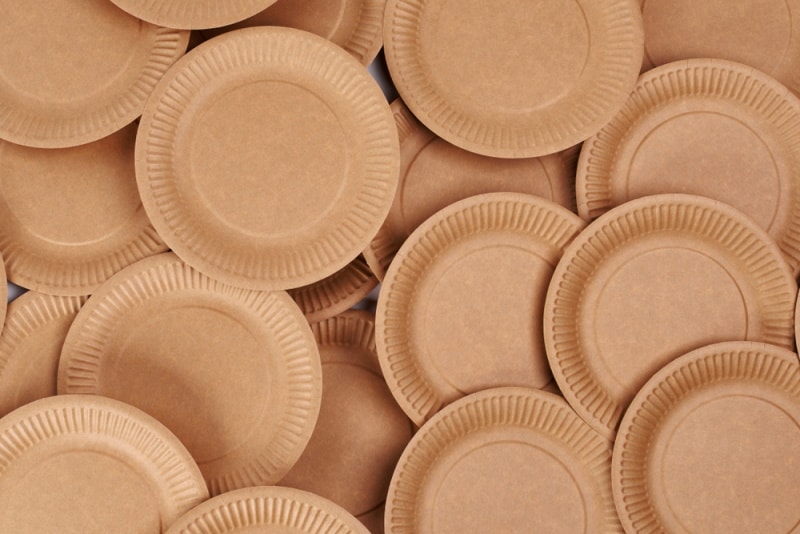
Approximately 64 billion paper cups and plates are thrown away annually in the US alone. The main challenge with products such as paper plates, paper cups, and plastic cutlery is to make them disposable yet recyclable.
Out of the 220 million Americans who use paper plates, many wonder about the environmental impact of this product. Due to the disposable nature of paper plates, they’re not entirely recyclable.
Keep reading to learn about the recyclability of paper plates and how to dispose of them properly.
Are Paper Plates Recyclable?
Unfortunately, paper plates are not recyclable, despite their global use. Most paper plates are coated in wax, clay, and plastic to prevent them from absorbing grease and liquids from various foods. These coatings can get jammed in the machines at recycling facilities.
Most recycling facilities aren’t willing to go through the effort required to separate these coatings from the plates before recycling. As a result, they’re unable to recycle paper plates, despite popular belief.
However, your local municipality may accept specific to-go containers and coated paper plates as long as they’re clean. So don’t forget to check the individual recycling requirements of your area before composting your paper plates.
You’ll also find paper plates made entirely from paper with no coating, but they’re vulnerable to grease and liquid absorption. Even in these cases, though, most recycling facilities don’t accept dirty paper plates to prevent contamination.
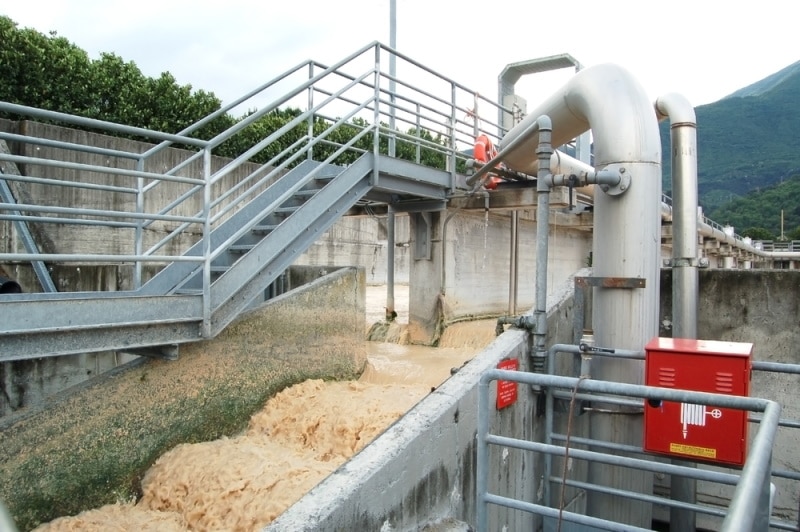
Environmental Effect of Paper Plates
Most people assume that paper plates are good for the environment as they’re made from paper, but that’s not the case. In reality, regular ceramic plates are much more eco-friendly than single-use paper plates. For example, you would need to reuse your regular plates 50 times to match the environmental impact of a paper plate.
It’s also important to consider that the sourcing, manufacturing, delivery, use, and disposal of paper plates aren’t always ethical. Thousands of trees are cut to yield the 64 billion paper plates and cups used yearly, contributing to deforestation and carbon sink loss.
Even then, that’s not where the harmful environmental effects of paper plates end. Instead, harmful chemicals like bleach are used to give paper plates a clean white appearance, wreaking havoc on human health and the environment.
It’s also worth noting that paper plates have a higher water footprint than you expect. It takes approximately 8 gallons of water to manufacture a single paper plate, while running the dishwasher once takes 3–15 gallons of water.
If you’re not buying paper plates locally, you must also consider the transportation footprint of these products. Finally, each paper plate is only used once and sent to landfills with no attempts for recycling due to contamination or plastic coatings.
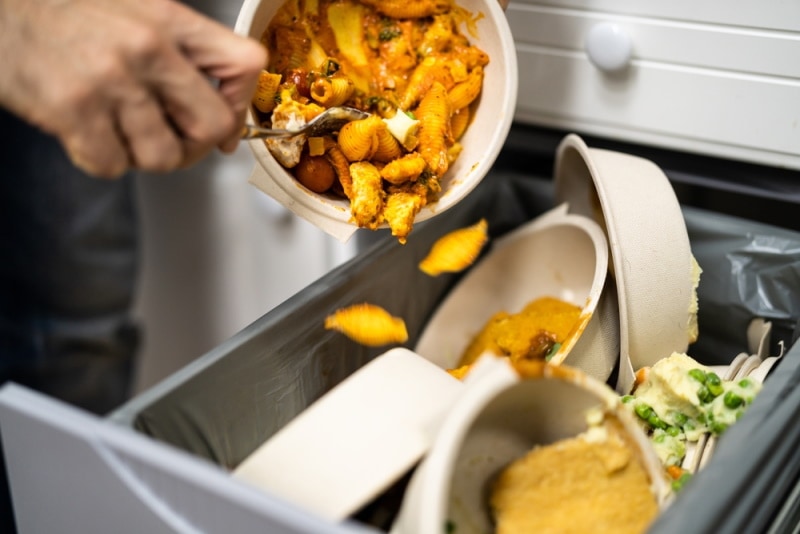
Are Paper Plates Biodegradable?
While paper plates aren’t recyclable, they are biodegradable, as they stem from organic sources such as trees. So even though they end up in landfills, they decay over a certain period and don’t reenter the ecosystem.
However, the same cannot be said about the plastic coatings on paper plates, which degrades into microplastics. Then, it harms marine life or human beings by reentering the food industry.
Of course, leaving paper plates to biodegrade may seem like a better option than jamming recycling machines with plastic coatings, but it has its faults too. The actual paper plate only takes a few months to biodegrade completely, but the plastic coating can remain in the ecosystem for many years.
How Are Paper Plates Recycled?
While it is complex, recycling paper plates isn’t entirely impossible. First, you must ensure they’re not contaminated with grease, food, or liquid. It’s also crucial to guarantee that the paper plate has a bioplastic or no plastic coating.
If you’re interested in recycling paper plates, the process begins with cleaning your collection. Then, you can send them to a recycling facility. There, workers will sort through their paper plate pile to separate any contaminated pieces that may have found their way in.
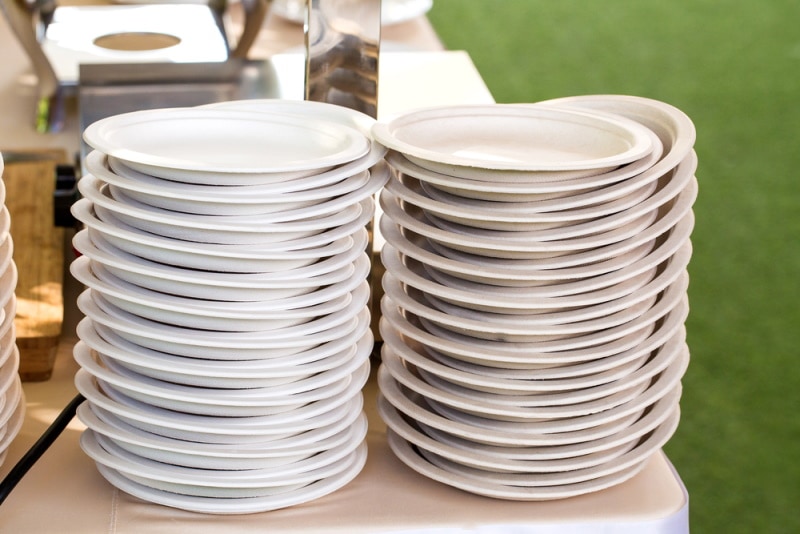
Next, they pulp all paper plates, using water and chemicals to achieve a pasty consistency. It’s worth noting that the manufacturing process uses 8 gallons of water per plate, which is why it’s unethical.
The next step involves pushing the pulp through screens to get rid of unwanted bits and pieces before moving onto the de-inking stage. Workers use hydrogen peroxide to regain the signature white appearance of paper plates in the bleaching process.
Finally, the paper pulp is rolled, dried, and cut into the desired shape, completing the recycling process of paper plates.
How to Properly Dispose of Paper Plates
If you have a paper plate made from 100% paper and no plastic, wax, or clay coating, you may discard them in any green or recycle bin. However, if the paper plate has a plastic coating, it cannot be recycled.
Instead, you can use them for composting, making sure to check for the PLA tag beforehand. Once the paper biodegrades, it can provide multiple valuable nutrients to your soil and encourage plant growth. Meanwhile, the bioplastic decays over time.
If your paper plate does not have a PLA tag, it is not compostable. In such cases, you can use your paper plate for crafts instead or try cleaning and reusing them.
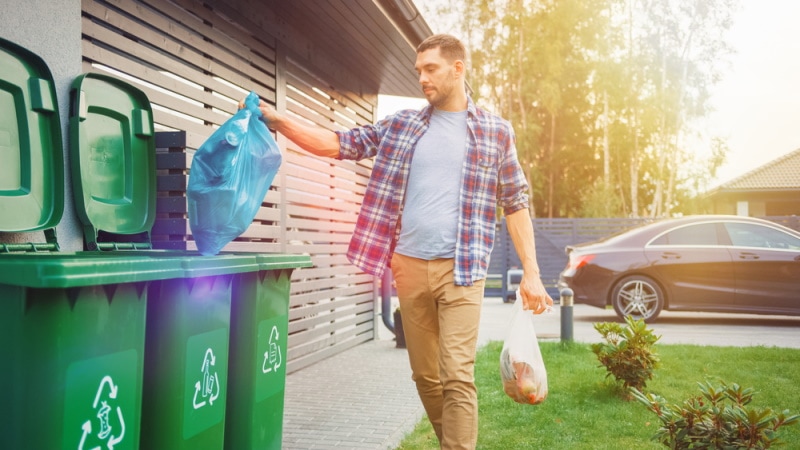
Conclusion
Paper plates don’t take too long to biodegrade, but their single-use nature still makes them non-recyclable and unethical. However, you can properly dispose of them by composting them or reusing them in crafts.
See also: Are Plastic Utensils Recyclable? How Do You Properly Dispose of Them?
Featured Image Credit: gpointstudio, Shutterstock
Contents
